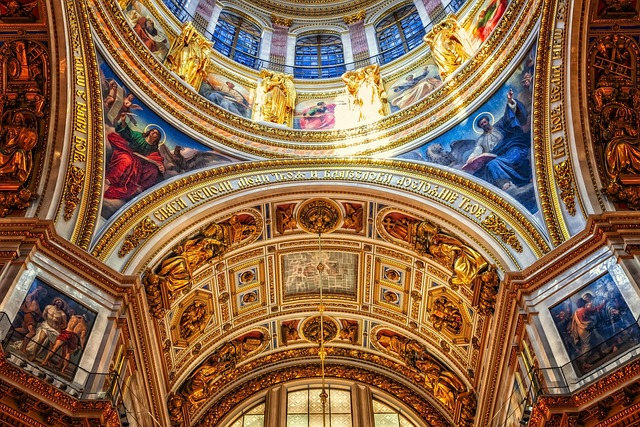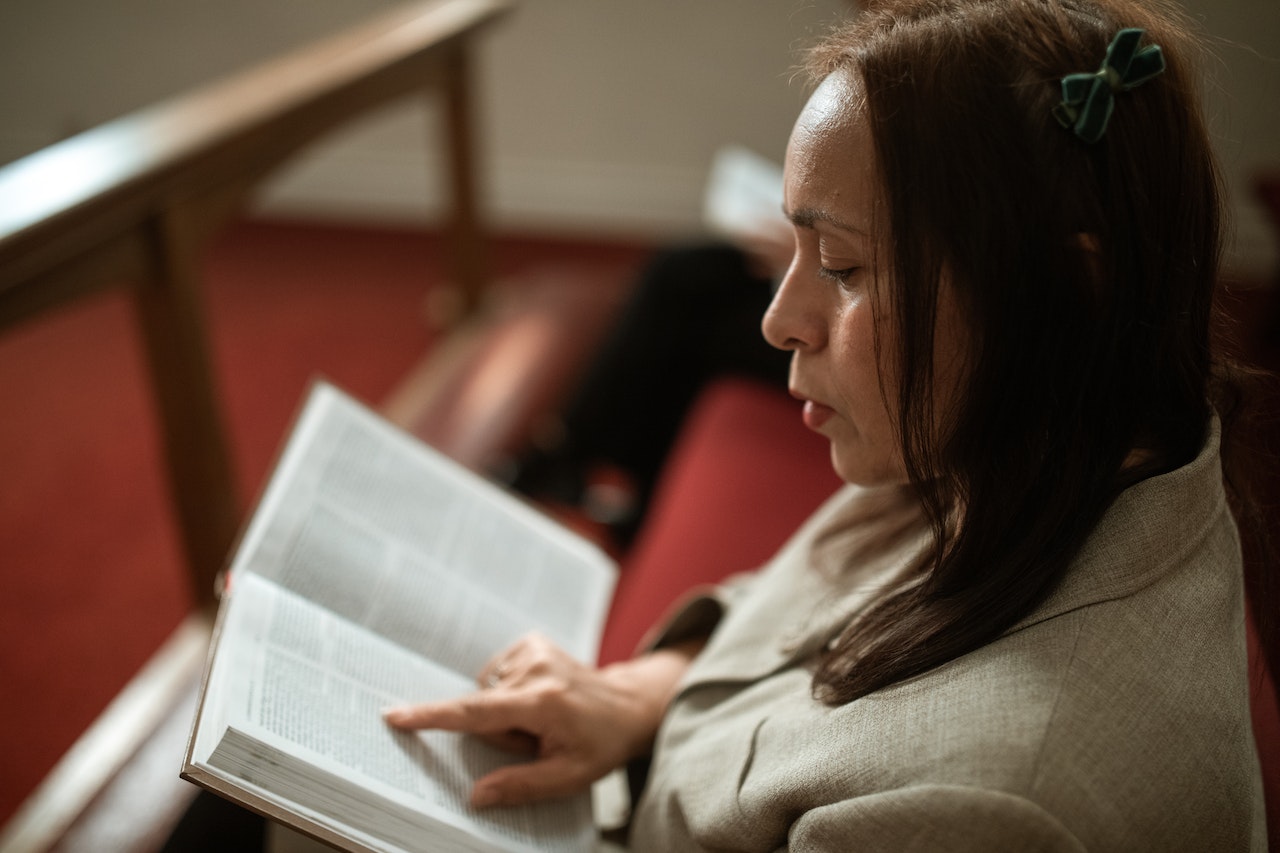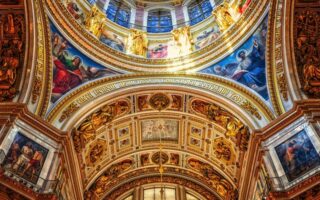There are several Orthodox churches around the world, each with its own distinct traditions and practices. These include the Eastern Orthodox Church, Oriental Orthodox Churches, and the Eastern Catholic Churches.
Table of Contents
The History and Beliefs of the Eastern Orthodox Church
The Eastern Orthodox Church is one of the oldest Christian denominations in the world, with a rich history and unique set of beliefs. It traces its roots back to the early days of Christianity, when the apostles spread the teachings of Jesus Christ throughout the Mediterranean region.
The history of the Eastern Orthodox Church is closely intertwined with the history of the Byzantine Empire. In fact, the Byzantine Empire was the first state to adopt Christianity as its official religion, and the Eastern Orthodox Church became the state church. This close relationship between church and state had a profound impact on the development of the church and its beliefs.
One of the key beliefs of the Eastern Orthodox Church is the belief in the Holy Trinity. Orthodox Christians believe that God exists as three distinct persons – the Father, the Son (Jesus Christ), and the Holy Spirit – who are all fully God and yet distinct from one another. This belief is central to Orthodox theology and is often depicted in the form of the icon known as the Holy Trinity.
Another important aspect of Orthodox belief is the veneration of icons. Icons are religious images that are used as aids to worship and prayer. Orthodox Christians believe that icons are not mere works of art, but rather windows into the divine. They believe that through icons, they can have a direct encounter with the spiritual reality they represent.
The Eastern Orthodox Church also places a strong emphasis on the sacraments. Sacraments are sacred rituals that are believed to convey God’s grace to the faithful. The Orthodox Church recognizes seven sacraments, including baptism, chrismation (confirmation), the Eucharist (also known as Holy Communion), confession, marriage, holy orders, and anointing of the sick.
In addition to its beliefs, the Eastern Orthodox Church also has a distinct liturgical tradition. Orthodox worship is characterized by its beauty, solemnity, and reverence. The liturgy is conducted in a language known as Church Slavonic, which is a form of Old Church Slavonic. The use of this ancient language helps to connect the faithful to the long history of the church and its traditions.
The Eastern Orthodox Church is also known for its strong sense of community and its commitment to social justice. Orthodox Christians believe that they are called to live out their faith in the world and to work for the transformation of society. This commitment to social justice is reflected in the church’s teachings on issues such as poverty, war, and the environment.
In conclusion, the Eastern Orthodox Church is a rich and vibrant Christian tradition with a long and storied history. Its beliefs, liturgical traditions, and commitment to social justice make it a unique and important part of the global Christian community. Whether you are a member of the Orthodox Church or simply interested in learning more about it, exploring its history and beliefs can be a fascinating and enriching experience.
A Guide to the Different Orthodox Churches Around the World

Orthodox Christianity is one of the oldest branches of Christianity, with a rich history and a diverse range of churches around the world. In this guide, we will explore the different Orthodox churches and their unique traditions and practices.
The Eastern Orthodox Church is the largest and most well-known branch of Orthodox Christianity. It traces its roots back to the early Christian church and is centered in Eastern Europe, Russia, and the Middle East. The Eastern Orthodox Church is known for its elaborate liturgical worship, beautiful icons, and strong emphasis on tradition and spirituality.
Within the Eastern Orthodox Church, there are several autocephalous (self-governing) churches. The most prominent among them are the Greek Orthodox Church, the Russian Orthodox Church, and the Serbian Orthodox Church. Each of these churches has its own distinct traditions and cultural influences.
The Greek Orthodox Church is one of the oldest and most influential Orthodox churches. It is known for its vibrant liturgical worship, which includes chanting, incense, and the use of icons. The Greek Orthodox Church also places a strong emphasis on the sacraments, particularly the Eucharist, and has a rich theological tradition.
The Russian Orthodox Church is the largest Orthodox church in terms of membership. It has a long and complex history, closely intertwined with the history of Russia itself. The Russian Orthodox Church is known for its beautiful churches, rich liturgical music, and strong connection to Russian culture and identity.
The Serbian Orthodox Church is another significant Orthodox church, particularly in the Balkans. It has a strong national identity and is deeply rooted in Serbian history and culture. The Serbian Orthodox Church is known for its monastic tradition, with many monasteries scattered throughout Serbia.
In addition to the Eastern Orthodox Church, there are also several Oriental Orthodox churches. These churches split from the Eastern Orthodox Church in the 5th century over theological differences. The Oriental Orthodox churches include the Coptic Orthodox Church, the Armenian Apostolic Church, and the Ethiopian Orthodox Tewahedo Church.
The Coptic Orthodox Church is the largest Christian church in Egypt and has a rich history dating back to the early Christian era. It is known for its distinctive liturgical worship, which includes ancient chants and prayers. The Coptic Orthodox Church also has a strong monastic tradition, with many monasteries in Egypt.
The Armenian Apostolic Church is the national church of Armenia and has a unique liturgical tradition. It is known for its beautiful hymns and chants, as well as its rich artistic heritage, including intricate stone carvings and illuminated manuscripts.
The Ethiopian Orthodox Tewahedo Church is one of the oldest Christian churches in the world and has a strong presence in Ethiopia. It has a unique liturgical tradition, with a strong emphasis on music and dance. The Ethiopian Orthodox Tewahedo Church also has a rich monastic tradition, with many monasteries and hermitages in Ethiopia.
These are just a few examples of the different Orthodox churches around the world. Each church has its own distinct traditions and practices, but they all share a common commitment to the ancient Christian faith. Whether you are Greek, Russian, Armenian, or Ethiopian, there is an Orthodox church that can provide a spiritual home for you. So, if you are interested in exploring the rich traditions of Orthodox Christianity, why not visit a local Orthodox church and experience the beauty and spirituality for yourself?
Exploring the Architecture and Iconography of Orthodox Churches
Orthodox churches are known for their unique architecture and rich iconography, which play a significant role in the religious and cultural traditions of the Eastern Orthodox Church. Exploring the architecture and iconography of these churches can provide a fascinating glimpse into the history and beliefs of this ancient Christian tradition.
One of the most distinctive features of Orthodox churches is their domed architecture. These churches are often characterized by large, onion-shaped domes that rise above the main structure. The domes symbolize the heavens and the presence of God, and their shape is said to represent the connection between heaven and earth. The domes are typically adorned with intricate frescoes or mosaics, depicting scenes from the Bible or the lives of saints.
Inside an Orthodox church, you will find a variety of iconography that holds great significance for believers. Icons are religious images that serve as windows into the divine. They are considered to be sacred and are venerated by the faithful. Icons can be found throughout the church, from the iconostasis, a screen of icons that separates the sanctuary from the nave, to the walls and ceilings.
The iconostasis is a central feature of Orthodox churches and is often elaborately decorated. It is composed of several tiers of icons, with the central doors known as the Royal Doors. These doors are only opened during specific parts of the liturgy, symbolizing the entrance of Christ into the sanctuary. The icons on the iconostasis depict various saints, angels, and scenes from the life of Christ, serving as a visual representation of the heavenly realm.
In addition to the iconostasis, Orthodox churches are adorned with numerous other icons. These icons can be found on the walls, in the form of frescoes or mosaics, and on the ceilings. Each icon tells a story or represents a particular saint or event in the Christian tradition. The faithful often light candles and offer prayers before these icons, seeking intercession and guidance.
The use of icons in Orthodox worship is deeply rooted in the belief that the divine can be encountered through the material world. Icons are seen as windows into the spiritual realm, allowing believers to connect with the divine presence. They are not worshipped as idols but are venerated as sacred objects that facilitate a deeper connection with God.
The art of iconography is highly regarded in the Orthodox Church and has a long history dating back to the early centuries of Christianity. Iconographers undergo rigorous training and adhere to specific techniques and styles that have been passed down through generations. The creation of an icon is considered a spiritual act, with the artist seeking to convey the divine presence through their work.
Exploring the architecture and iconography of Orthodox churches offers a unique opportunity to delve into the rich history and traditions of the Eastern Orthodox Church. The domed architecture and intricate iconography serve as visual representations of the faith and provide a tangible connection to the divine. Whether you are a believer or simply interested in art and history, a visit to an Orthodox church can be a truly enlightening experience.
Understanding the Liturgical Traditions and Practices of Orthodox Christianity
Orthodox Christianity is a rich and diverse religious tradition that has its roots in the early days of Christianity. With its unique liturgical traditions and practices, Orthodox churches offer a spiritual experience that is both ancient and timeless. In this article, we will explore the different types of Orthodox churches and gain a deeper understanding of their distinct characteristics.
One of the most well-known Orthodox churches is the Greek Orthodox Church. As the name suggests, this branch of Orthodoxy originated in Greece and has spread to various parts of the world. Greek Orthodox churches are known for their vibrant liturgical services, which are conducted in the Greek language. The use of icons, incense, and elaborate vestments adds to the beauty and solemnity of the worship experience.
Another prominent branch of Orthodox Christianity is the Russian Orthodox Church. With its strong ties to the Byzantine Empire, the Russian Orthodox Church has a rich history and a unique set of traditions. Russian Orthodox churches are characterized by their iconic onion-shaped domes and intricate frescoes. The liturgical services are conducted in Church Slavonic, a language that adds a sense of reverence and mysticism to the worship experience.
In addition to the Greek and Russian Orthodox churches, there are several other branches of Orthodoxy that have their own distinct characteristics. The Serbian Orthodox Church, for example, is known for its strong emphasis on monasticism and its rich musical tradition. The Ethiopian Orthodox Tewahedo Church, on the other hand, has a unique liturgical calendar and a rich cultural heritage that sets it apart from other Orthodox churches.
While each Orthodox church has its own unique traditions and practices, they all share a common foundation in the early Christian Church. The liturgical services in Orthodox churches are centered around the Eucharist, or Holy Communion, which is seen as the central act of worship. The use of icons, which are considered windows into the divine, is also a common practice in Orthodox churches.
Orthodox Christianity places a strong emphasis on the role of the clergy in leading the worship services. The priests and bishops, who are seen as the successors of the apostles, play a central role in the liturgical life of the church. They are responsible for conducting the sacraments, preaching the Word of God, and providing spiritual guidance to the faithful.
In addition to the liturgical services, Orthodox churches also have a rich tradition of fasting and prayer. Fasting is seen as a way to purify the body and soul, and it is practiced throughout the year, particularly during the Great Lent leading up to Easter. Prayer, both personal and communal, is an integral part of the Orthodox Christian’s spiritual life.
In conclusion, Orthodox Christianity encompasses a wide range of churches, each with its own unique traditions and practices. From the Greek Orthodox Church with its vibrant liturgical services to the Russian Orthodox Church with its iconic domes, each branch of Orthodoxy offers a distinct spiritual experience. Despite their differences, all Orthodox churches share a common foundation in the early Christian Church and a commitment to the rich liturgical traditions that have been passed down through the centuries. Whether you are Greek, Russian, Serbian, or Ethiopian, Orthodox Christianity offers a spiritual journey that is both ancient and relevant to the modern world.
Conclusion
In conclusion, there are several Orthodox churches around the world, including the Eastern Orthodox Church, Oriental Orthodox Church, and the Assyrian Church of the East. These churches have distinct beliefs and practices but share a common foundation in the early Christian traditions.
For licensing reasons, we must provide the following notice: This content was created in part with the help of an AI.


